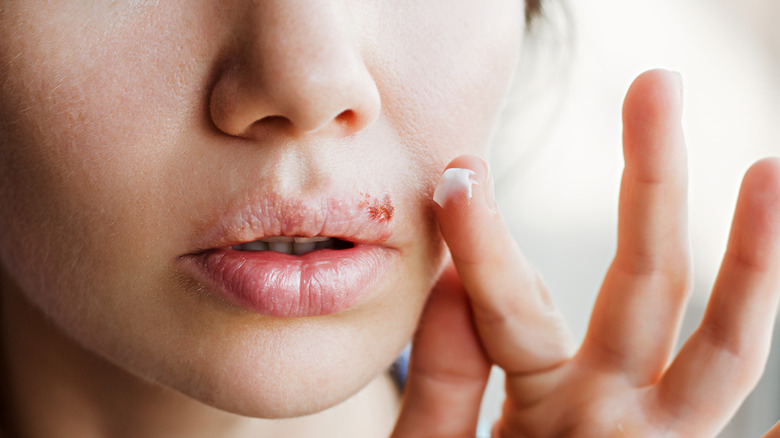How To Tell If You Have Angular Cheilitis Vs. A Cold Sore
Understanding one's health is hard in general, nonetheless during the ongoing COVID-19 pandemic when doctor visits are less intimate and less frequent than before. It can be hard to tell if you have a bladder infection versus a UTI or a cyst versus a pimple, and on the mental health side of things, it can be hard to tell if you have anxiety or stress. At the same time, it can be hard to distinguish between a cold sore and angular cheilitis.
A large problem with not being able to distinguish between two health problems is that one can be more serious than the other, despite sharing similar symptoms in the beginning. One could even need emergency treatment, which people might not get if they think they're dealing with something less serious.
For cold sores versus angular cheilitis, one should pay attention to how painful the sores on their mouth are. According to Dignity Health, cheilitis is typically more painful than cold sores, but it can form on one or both sides of your mouth, just as cold sores would. Here's how to tell the difference.
Both cold sores and angular cheilitis might need treatment, but for different reasons
According to Healthline, angular cheilitis is much less common than getting cold sores, so if you feel something on your mouth, you should be vigilant — but understand that it's most likely only a cold sore.
Moreover, cheilitis begins not as one or more bumps but as red patches on and/or inside the mouth, per News-Medical.Net. These patches grow drier with time and crack, leading to the formation of sores. Timing is also important, as cheilitis sores can take two to three weeks to heal — and even longer depending on how bad they get — while cold sores typically heal after a few days, Dignity Health notes. When angular cheilitis isn't treated, ulcers can form, too, and the skin fissures formed as a consequence of the dry patches can lead to mouth bleeding. Regular cold sores won't form this violently.
According to Healthline, cold sores are typically formed as a result of contracting the herpes simplex virus, which one carries for life. However, these cold sores aren't as violent as angular cheilitis, and they can come and go. Cheilitis sores, on the other hand, can be caused by any number of factors, according to Dignity Health — including IBS, a yeast infection, not getting proper nutrients — or even drooling while sleeping.
Ultimately, though, no matter which type of sore you think you may have, you should get checked by a professional. You may need treatment for either option.

